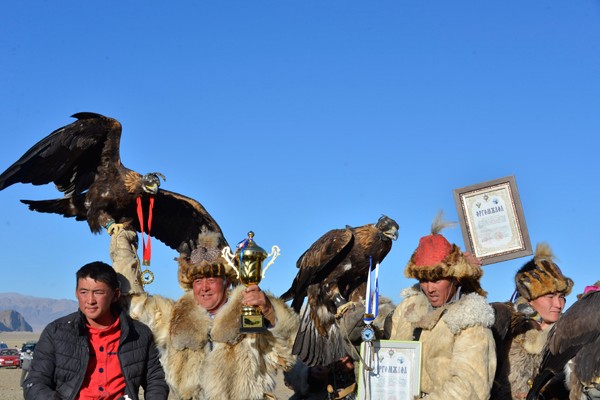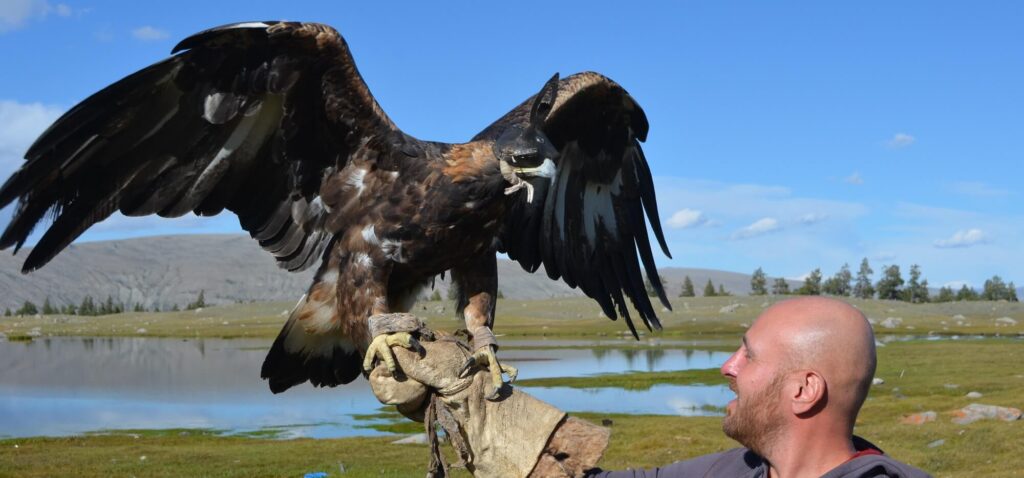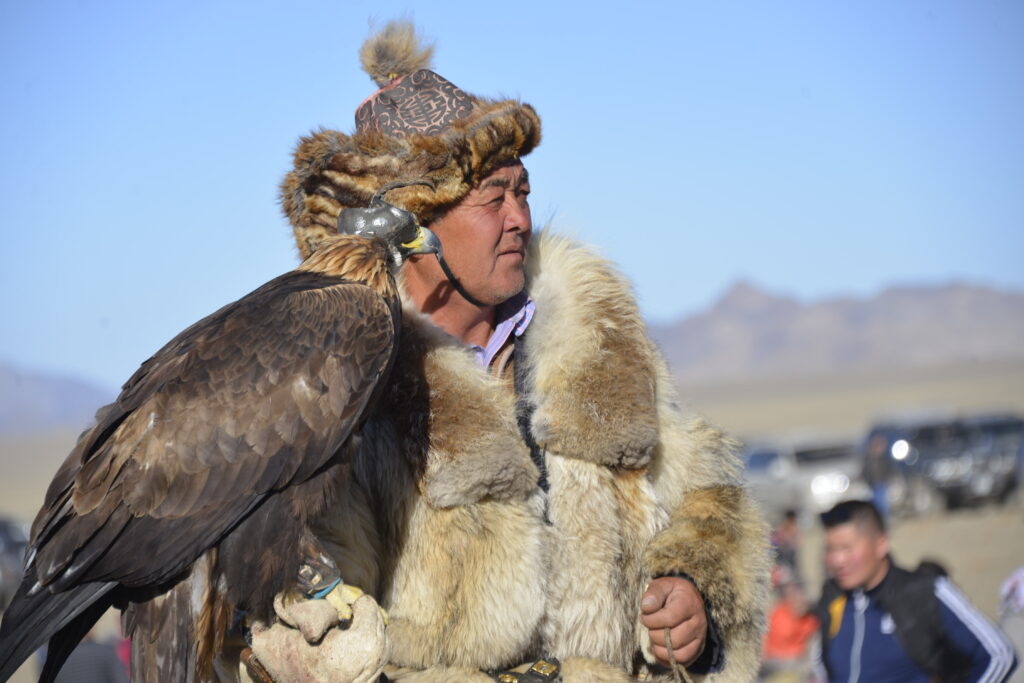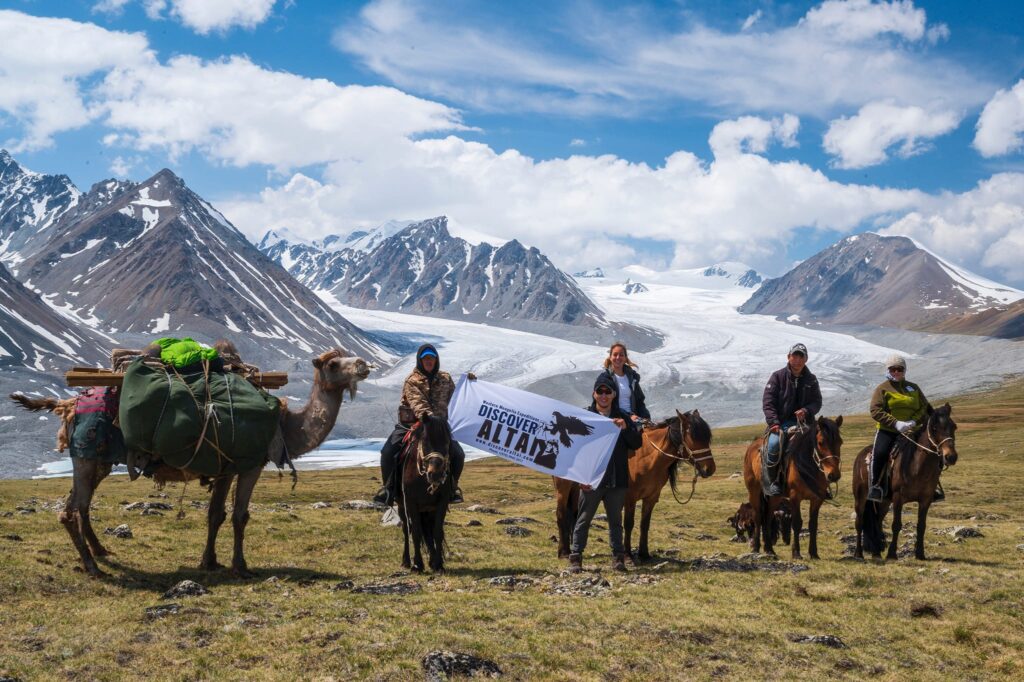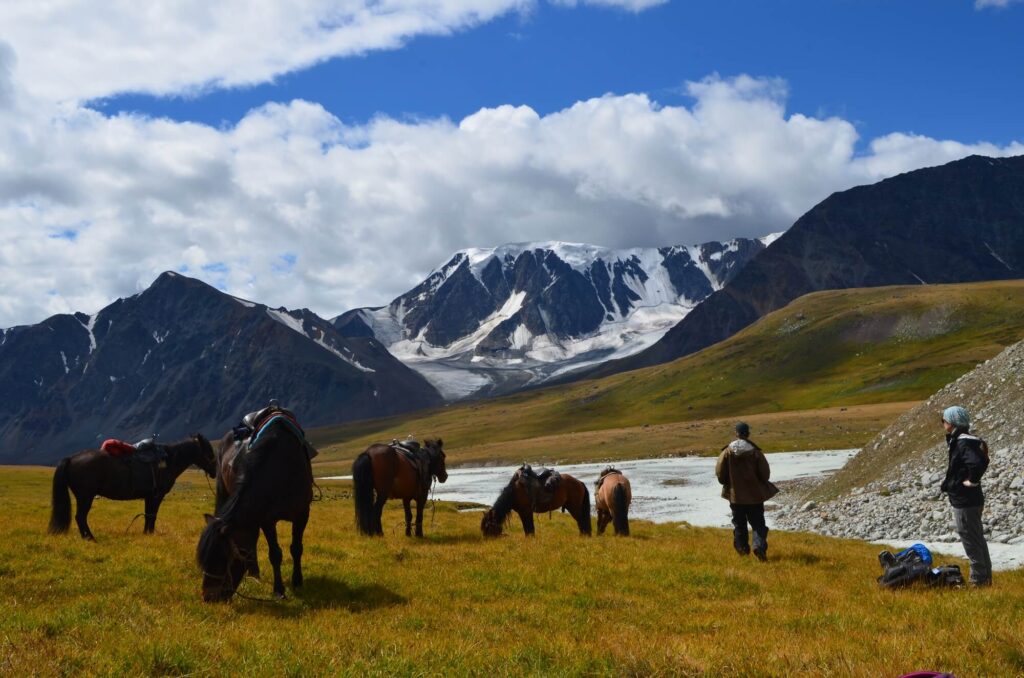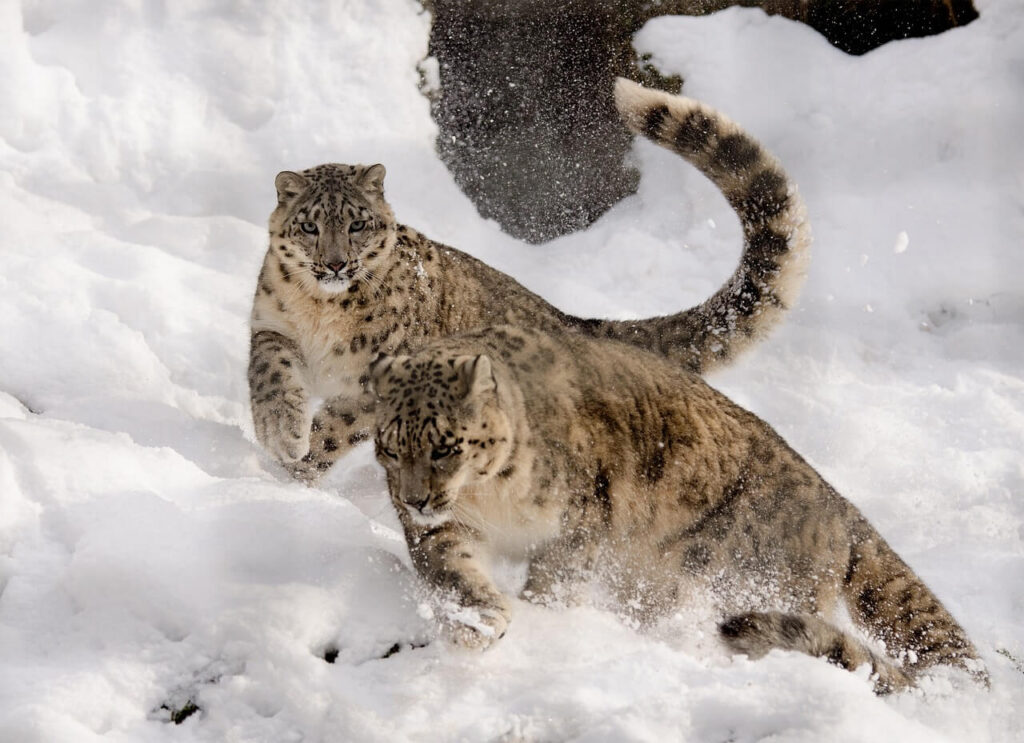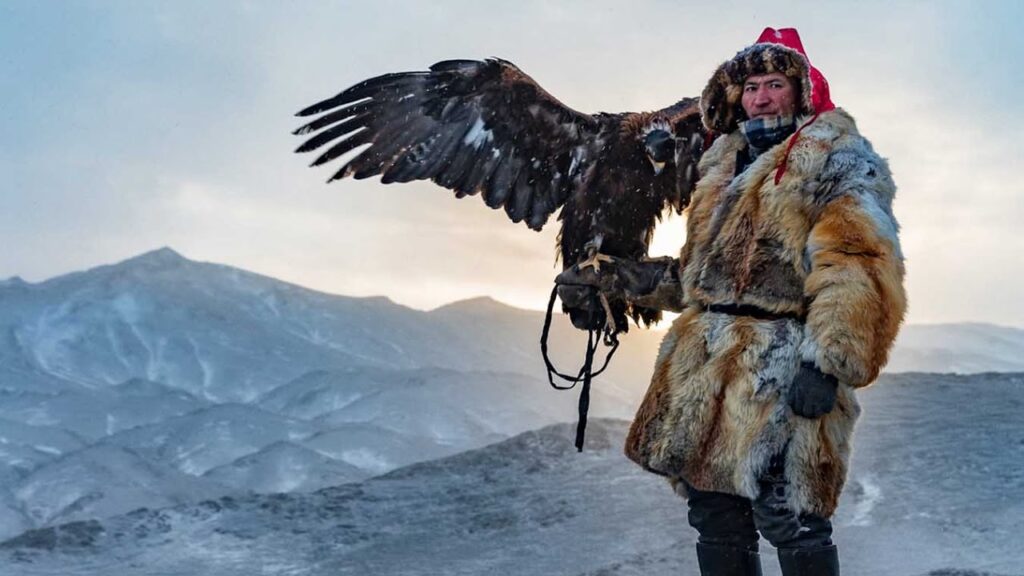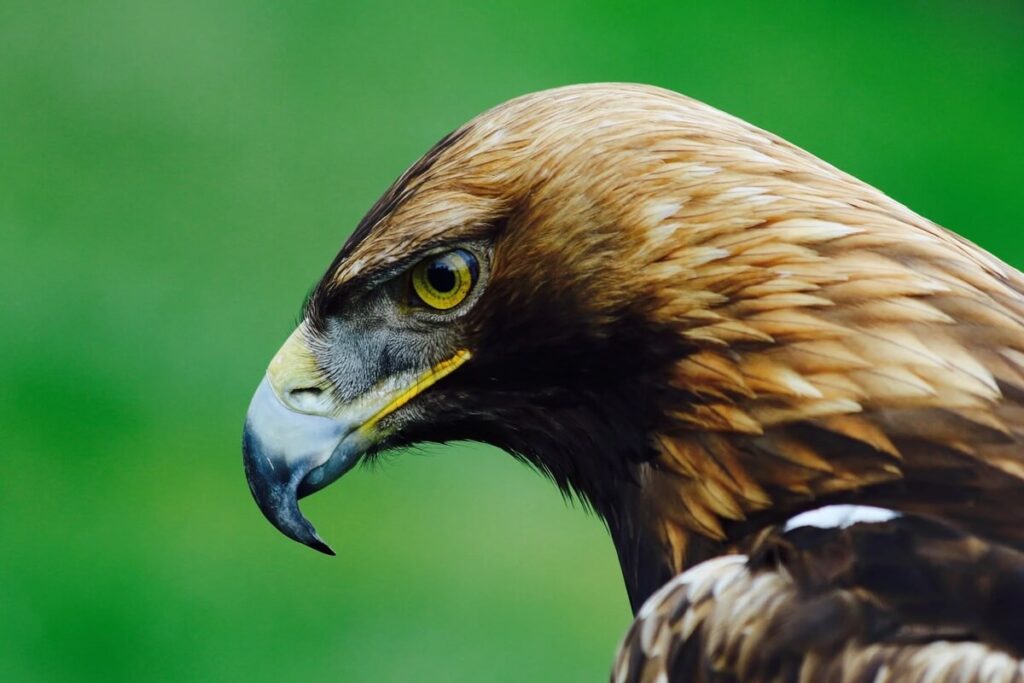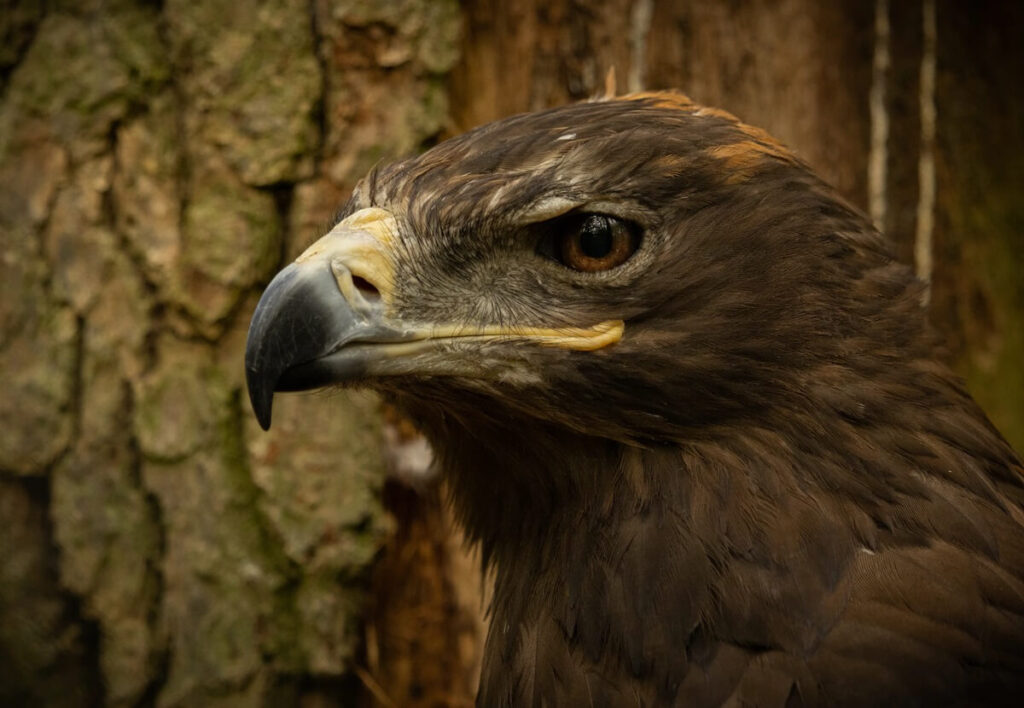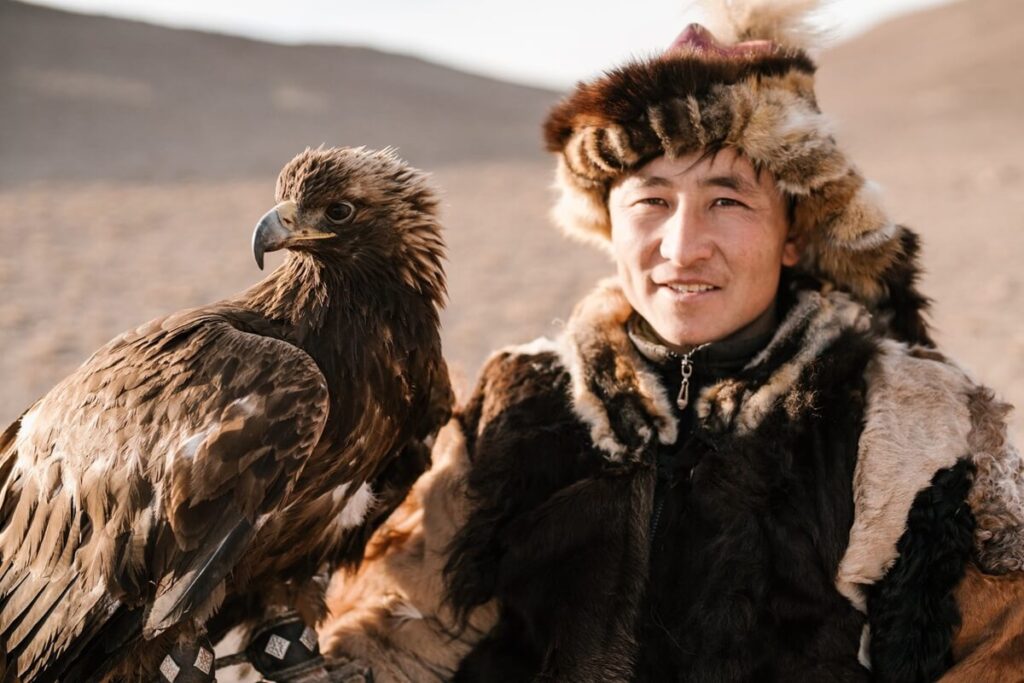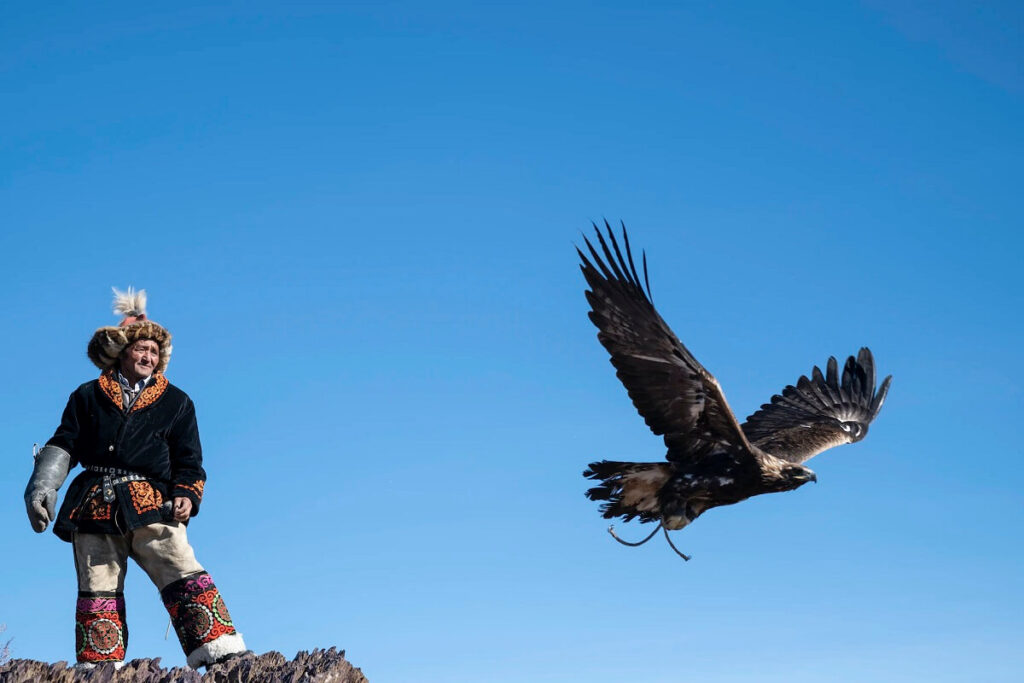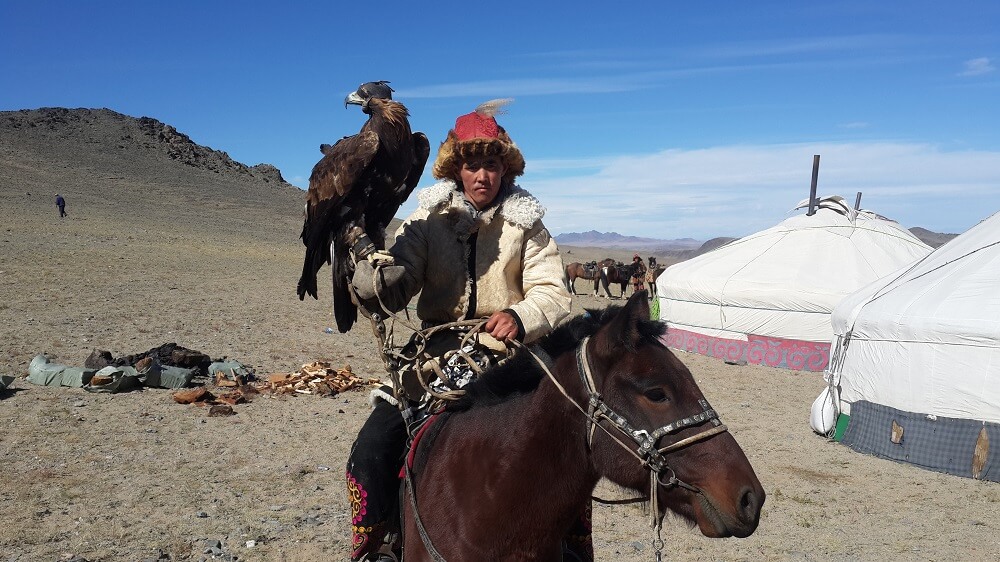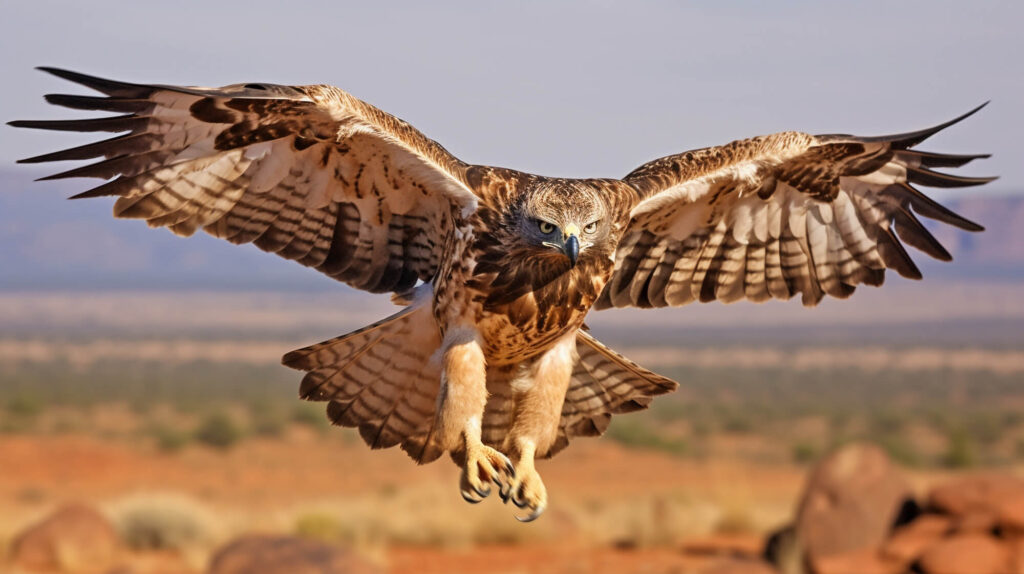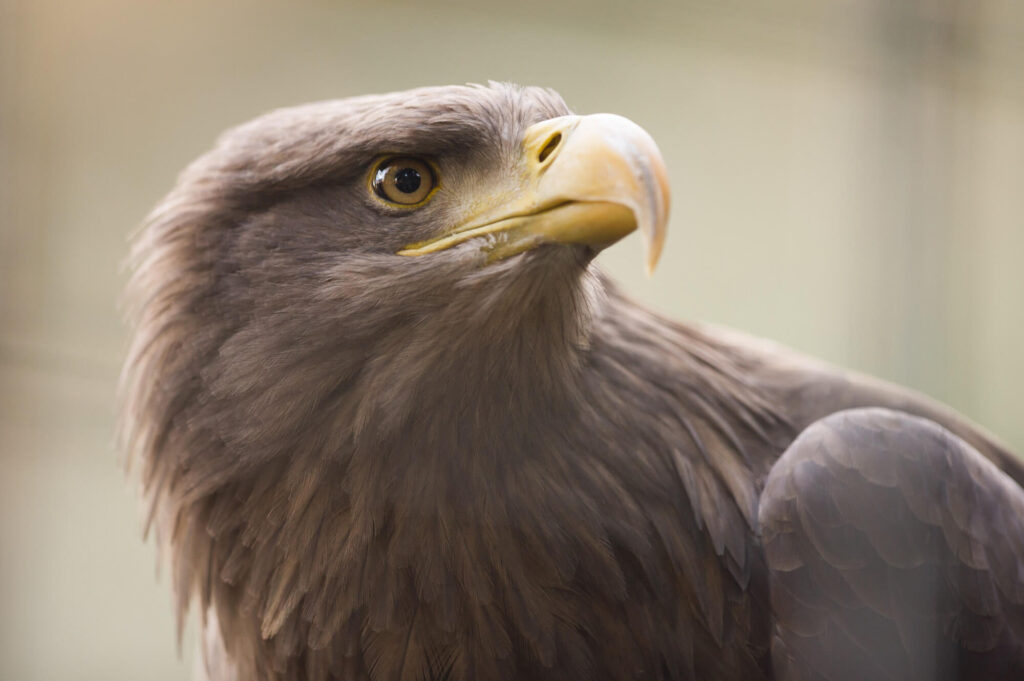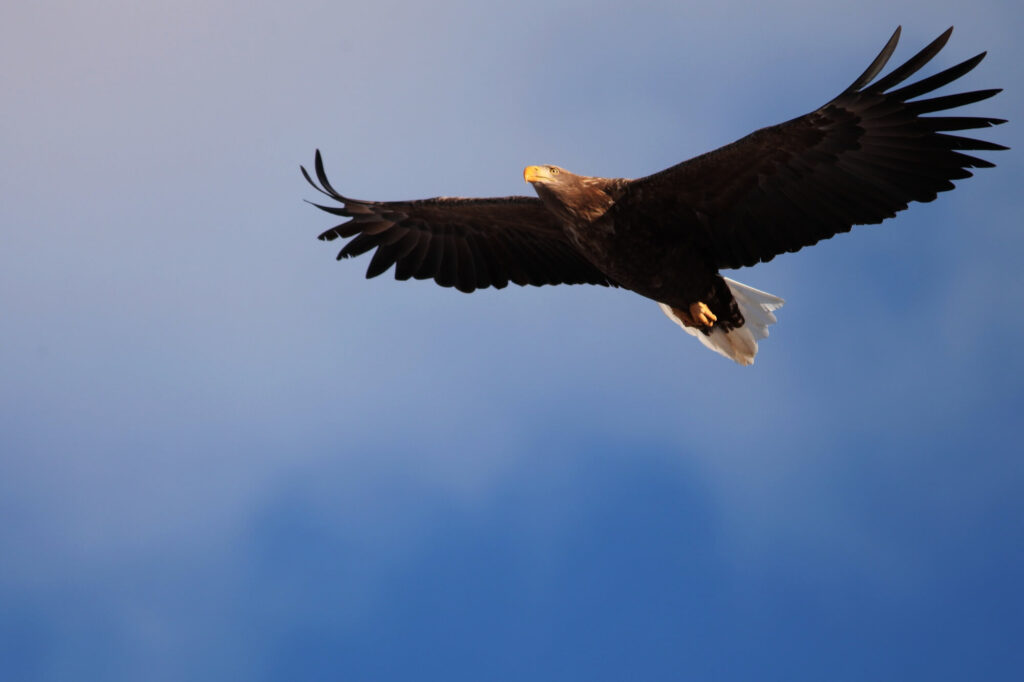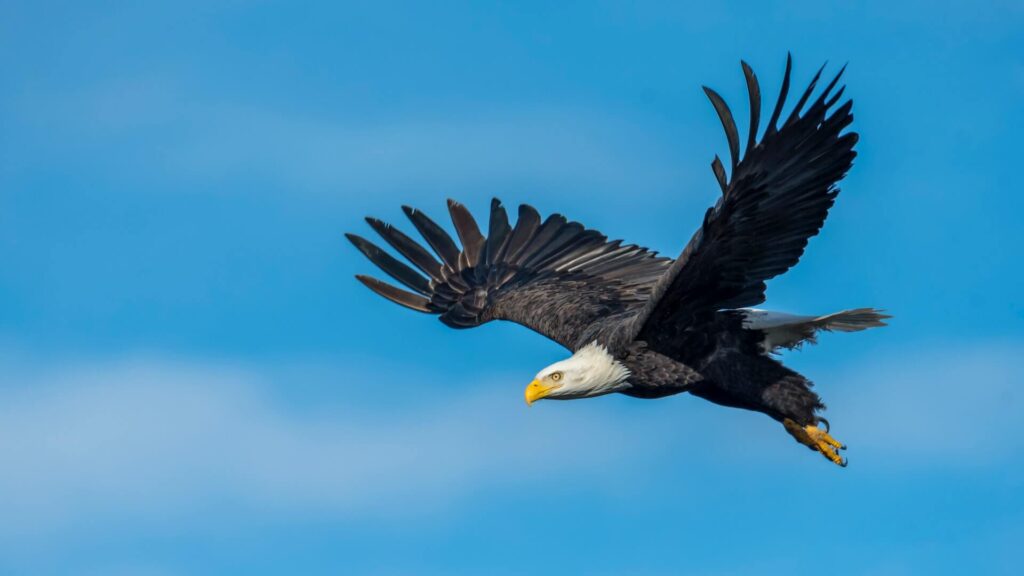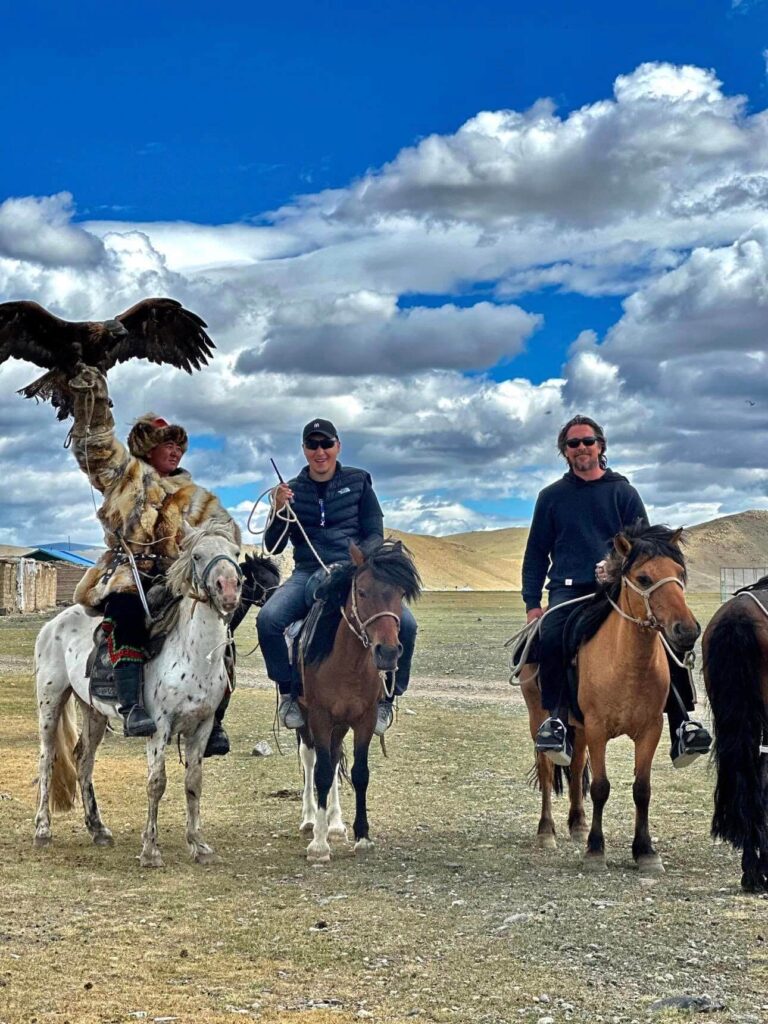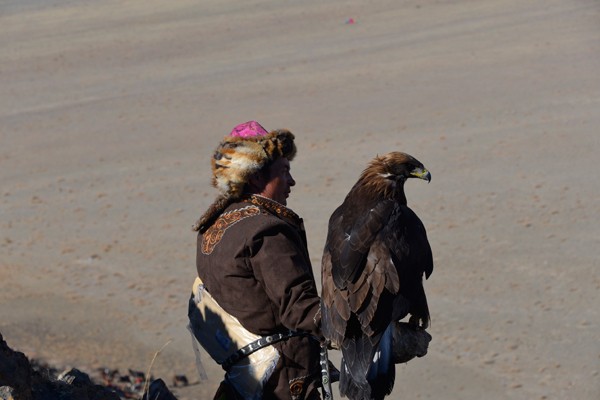Mongolia, with its vast steppes and rugged mountain ranges, is home to some of the world’s most ancient and fascinating traditions.
Among these is the practice of hunting wolves with golden eagles, a tradition deeply rooted in the nomadic culture of the Kazakh people who inhabit the western regions of the country.
This unique form of falconry, known as berkutchi, not only demonstrates the incredible bond between humans and birds of prey but also reflects the resilience and resourcefulness of the people who have mastered this ancient art.
We offer you GOLDEN EAGLE FESTIVAL PHOTOGRAPHY TOUR. Come and enjoy the stunning landscape that is covered with ancient mountains, rivers, and Mongolian history. Join us to watch a great festival with truly great hunters! 🤩🤩
The Origins of Eagle Hunting
The origins of hunting with golden eagles in Mongolia can be traced back over two millennia. The practice likely spread to the region from Central Asia, where the art of falconry was a revered skill among various nomadic tribes.
Over time, the Kazakh people of Mongolia, particularly those living in the Bayan-Ölgii province, refined this skill into a tradition that has been passed down through generations.
The tradition of eagle hunting was not just a sport or pastime; it was a means of survival. In the harsh, mountainous regions of western Mongolia, where winters are long and unforgiving, hunting was essential for providing food and furs.
The golden eagle, known for its strength, speed, and keen eyesight, became an invaluable partner in this endeavor. These majestic birds, with wingspans reaching up to seven feet, are capable of taking down prey as large as wolves, making them ideal hunting companions.
The Bond Between Hunter and Eagle
The relationship between the berkutchi (eagle hunter) and their eagle is one of mutual respect and trust. Training a golden eagle is a complex and time-consuming process that requires immense patience and skill.
The hunter usually begins by capturing a young eagle, typically a female, as they are larger and more aggressive than males. The eagle is then trained over several years, during which it learns to follow commands and hunt in partnership with its human counterpart.
This bond is strengthened by the deep cultural and spiritual significance that eagles hold for the Kazakh people. Eagles are seen as symbols of power, freedom, and nobility, and the act of hunting with them is considered a sacred tradition.
The eagle is treated with the utmost care and respect, and its needs are prioritized above all else. During the hunting season, which typically runs from October to March, the berkutchi and their eagle work together to track and hunt prey, with the hunter relying on the eagle’s exceptional vision and hunting prowess.
The Hunt
Hunting wolves with golden eagles is a challenging and dangerous endeavor. Wolves are cunning and powerful predators, capable of inflicting serious harm if cornered.
The hunt usually begins with the berkutchi and their eagle riding on horseback across the snowy plains or up into the mountains.
Once a wolf is spotted, the hunter releases the eagle, which dives toward its prey at speeds of up to 150 miles per hour. The eagle uses its powerful talons to grip the wolf’s neck or back, holding it down until the hunter arrives to finish the kill.
This form of hunting requires not only the skill and courage of the eagle but also the expertise and quick thinking of the hunter.
The success of the hunt depends on the berkutchi’s ability to read the terrain, anticipate the wolf’s movements, and guide the eagle effectively.
It is a true test of the hunter’s knowledge, experience, and connection with their bird.
Preservation of Tradition
In recent years, the tradition of eagle hunting has gained international attention, particularly through the annual Golden Eagle Festival held in Bayan-Ölgii. This festival celebrates the skill of the berkutchi and their eagles, attracting visitors from around the world. While the practice of hunting wolves with golden eagles is no longer a necessity for survival, it remains an important cultural heritage for the Kazakh people of Mongolia.
Efforts to preserve this tradition are crucial, as modern influences and environmental changes pose challenges to its continuity. By supporting cultural initiatives and promoting sustainable tourism, there is hope that this unique practice will endure for future generations.
Hunting wolves with golden eagles in Mongolia is more than just an ancient tradition; it is a testament to the enduring bond between humans and nature.
It reflects the resilience of a people who have thrived in one of the world’s most challenging environments and showcases a way of life that honors the natural world and its creatures.
As this remarkable tradition continues to captivate the imagination of people around the globe, it serves as a reminder of the beauty and power of cultural heritage.






